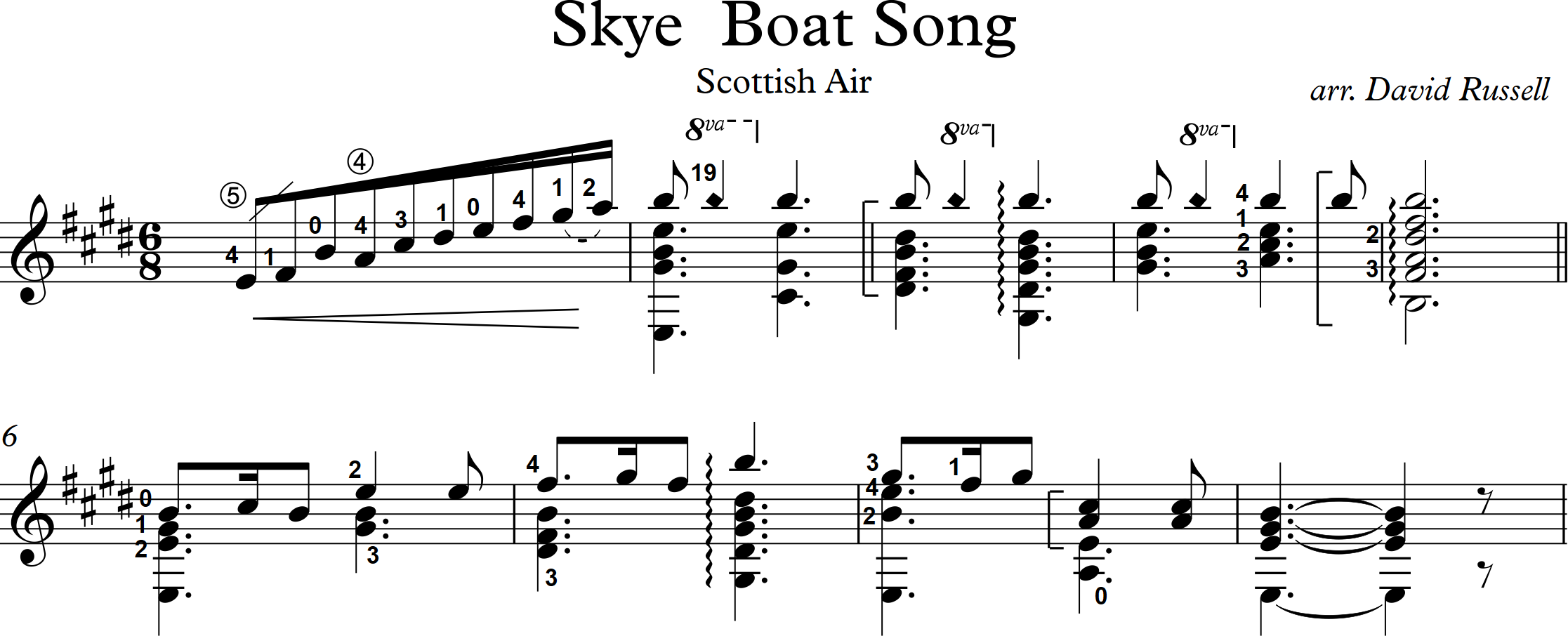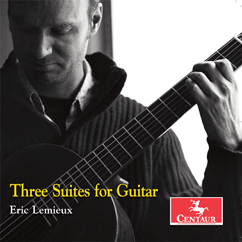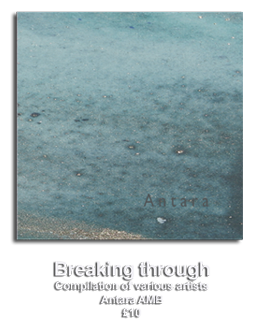Maximize your Sight-Reading Skillson the Guitar
By Eric F Lemieux
Let’s face it: the guitar is not an easy instrument when it comes to mastering sight-reading. If we compare the reading abilities of guitarists to those of other instrumentalists, such as violinists or keyboardists, guitarists are, generally speaking, poor readers.
This is simply a fact. There are many reasons for this: one of them is that there are so many different positions on the neck where we can play the same notes, and there is no clear reading position or tradition established as is the case for the violin family. In addition, we need to keep in mind that the guitar is a transposed instrument. Notes sound an octave lower than written, causing some great reading difficulties in the upper register of the instrument because we have to add so many ledger lines on top of the staff. No wonder there has always been a parallel tradition of writing in tablatures for this instrument. However, despite everything, I believe there are ways we can improve our reading abilities on the guitar and become better-trained musicians.
A while ago, I returned to the discipline of doing a little bit of plain sight-reading every day with some fresh new scores. After only a few days of this practice, I noticed a positive change in the way I read scores that I have been performing for years when I actually read the notes. All I did was to add five to ten minutes of pure sight-reading to my regular practice session. Five minutes at the beginning of the session and five minutes at the end. By “pure” sight-reading, I mean reading an absolutely fresh, new score that I never have read before. After the mental effort of reading the sheet of music, I am better prepared to cope with a score that is already familiar to me, and I sense that my reading is more accurate. I remember that in my very best years of practice, I spent up to an hour a day doing this sort of pure sight-reading. But in recent years, due to lack of time and perhaps a little laziness, I have not devoted as much practice time purely to sight-reading.
As a result, my brain grew somewhat lazy. I now acknowledge this. By returning to this discipline to some extent, I am gaining more awareness, quicker response and more precision in my execution of the musical score. Also, I have realized that it is not enough just to read scores as part of lessons with students or when practicing existing repertoire. It is essential to read at least a small amount of new material that takes you to the edge of your abilities every single day in order to maintain very effective reading capability.
Reading, like playing, is a skill. The best exercise, I find, is to read music that contains a variety of unusual chords and fingering positions that are high on the neck. I read these pieces very slowly, taking the time to work everything out in detail. In subsequent parts of this article, it will be my pleasure to give readers the very best tips for reading, according to what I have discovered in my practice over the years.
Sight-Reading tips I give to my students
-Position the score so that it is easily readable.
I tell my students to place the stand on the same side as the neck, at a height that allows them to look to the neck without turning their head. In a concert situation, the stand may be placed in a lower position so that the audience is able to see the performer.
– Practice Tai Chi for the eyes.
I suggest developing a discipline of the eyes whereby the eyes are in motion more than the head. The eyes have to regain their ability to be in movement and to reach the notes at any angle needed without turning the head. I call this Tai Chi for the eyes.
-The principle of a 90:10 ratio.
I advise my students to keep a ratio of 90:10. By this I mean that 90% of their attention should be on the score and 10% on the guitar’s neck. Let’s face it, as guitarists, we have to look at the neck at some point for precision of playing and clear articulation. However, I stress with my students that they should look at the neck for only the briefest instant, then return to the score as quickly as possible. I also tell them to train their eyes to jump back to the exact spot where they left the score. This practice will help them to develop good habits and the ability to stay focused, so they are less likely to completely lose track of where they are on a sheet during a performance. I have realized that it is important to teach this aspect of reading at the beginner’s level to avoid developing poor reading habits that can dog players for life if left unchecked.
– The imaginary pencil.
Here’s a good exercise for children. I point to notes with a pencil as they read, following the music as they go along. Then I ask them to imagine the pencil as they read when I’m no longer there. This works 100% of the time, and the results are tremendous and immediate.
– Vary the levels of difficulty and style.
I also suggest to my students to vary the style and difficulty levels of their reading materials. A practice reading session should include a little bit of music from every level, from easy to intermediate to advanced. This will broaden their spectrum and provide maximum benefit.
– Always read with a fresh mind.
When students have worked on reading a piece until it can be played almost (but not quite) by heart, my advice to them is to continue to approach the music as if they were reading it for the first time. I advise students to always read with the same awareness and attentiveness that they brought to their very first sight-reading of a piece. This is why I find it so important to read a few new scores every day. It trains students to maintain that fresh attitude of discovery with scores that have become quite familiar to them (but that cannot yet be performed by heart). With time, their sight-reading abilities will develop and, with greater ability, the acquisition of new repertoire will be easier and faster. When students have a piece at their fingertips (which, let it be said, is a big step beyond knowing it by heart), then and only then is it time to let go of the score entirely. In my view, the worst-case scenario for an instrumentalist approaching a performance is to be on the borderline between reading the piece and playing it from memory. In a moment of uncertainty, performers can lose their sense of where they are in the score altogether, with catastrophic results on the performance. This is why it is so important to be able to clearly identify when we are able to play a piece from memory and when we must rely on the score, and to develop good reading habits from the very beginning. For my part, I always know exactly which piece I am going to play by memory and which I will perform using sheet music—from beginning to end—during a performance.
– Read ahead.
Over the years, and with experience, readers may develop the ability to look ahead a few notes, or even a full measure, as they read, giving them much more freedom, control and mastery of expression as they perform the written score.
Another advantage of good sight-reading proficiency is that it broadens the repertoire of performable materials considerably. In my experience, there is a limited amount of music I can perform by heart. In fact, I maintain the same ratio of 90:10 regarding the percentage of music I play by reading a score and the percentage of music I have at my fingertips. I read the score during a performance on 90% of the music I perform and play only 10% by heart. In this way I am able to draw on a much wider repertoire.
A Step-by-Step Guide to Sight-Reading for Students
Where do you actually place your primary focus when you read? On the top, middle or bass parts?
My suggestion is to give more attention to the bass or middle parts, as the melody typically stands out naturally, but this is not an absolute rule. It may depend on the texture of a piece, but if the music is polyphonic, I think it is important to be precise about your main point of focus. There are a few interesting examples in which you need to concentrate on the bass part first. Here, in a short excerpt from the piece,
Canarios, by Gaspar Sanz, we have some fast runs in the upper register, accompanied by open strings in the bass. These runs are easier than they seem at first glance to learn almost by heart, but if I perform them in a reading situation without focusing on the bass, I am flirting with catastrophe. In a case like this, where I have to jump between the bass strings, and even play the third string with the thumb, it is essential that I place my primary focus on the bass, as strange as this may seem.
When reading chords, I advise students to get in the habit of reading the bottom and top voices first, then figuring out the middle parts going from bottom to top. There are often many possible solutions and fingerings for a given chord configuration, and you must do your best to find a workable solution quickly in a given context. Note, in the example above from an Arrangement of a Scottish Air, by David Russell, there is a series of chords in the opening of the piece that I would approach as described above when sight-reading.
A Step-by-Step Guide for Students
Before playing anything, I ask my students to make sure they carefully look at the tempo and time signature and find out the tonality of the piece. If in the music is tonal music, I ask them to look for the scale that fits the key signature and look for melodic patterns that corresponds to that scale. In a second step, I ask them to look rapidly at the rhythmic figures they will encounter on the sheet. Are they simple to understand or very complex? If the complexity of the rhythmic figures is challenging to them, I ask them to concentrate on the rhythm (and only the rhythm) to begin with. Then, when they have worked out the rhythm, we can start the first sight-reading, including the notes in addition to the rhythm. I also ask them to find the basic pulse of the piece (or page) they’re about to read. Sometimes, it’s the quarter note, but at other times, the eighth notes, or another figure, defines the basic pulse of the music. This is particularly relevant in modern or contemporary music. Finding the pulse is essential, and I advise doing so before playing a single note on the instrument. I also strongly recommend to all students that they work on a rhythmic solfège method, separately from the reading of scores, to develop a sense of timing and meter. There is an excellent rhythmic training method listed in the Useful References section at the end of this article.
Another thing: Are there some changes in the meter at some point in the piece? And if so, does the basic pulse remain the same? It’s a good idea to figure that out before playing anything.
A Guided Sight-Reading Session
The very first reading should be dedicated to figuring everything out slowly, playing the score from beginning to end for a global first encounter with the piece. This is a time to be receptive and to try to get the general feeling and colour of the music. Also, it is a good time to identify difficult passages.
The second reading is when fingerings may be written in if needed. I advise adding fingerings only when strictly necessary at the particular spots where they are essential to ensuring a flawless performance. Fingerings should be clearly written near the heads of the notes. The goal is for these fingerings to help the performance as much as possible. Avoid at all costs unclear notation or an excessive number of unusual fingerings. If fingerings for a sheet of music are clearly noted in this way, readers will be able to come back to the same sheet of music years later and find their way through the written-in fingerings immediately. If the information added is unclear, it will not be helpful. Instead, I suggest focusing on clarity and precision for a stumble-free performance.
The third reading should be devoted to figuring out remaining details, such as articulations, dynamics and improvements to one’s understanding of the overall structure of the piece, harmonically, melodically and rhythmically.
On the fourth reading, if everything goes smoothly, you will indeed be able to perform the complete piece of music with a measure of fluidity and to attain a very good understanding of the piece, even if you may still need further practice to reach technical perfection. It is up to you to decide if additional readings are needed. If the piece is of a very advanced technical level, it certainly is a good idea to plan for additional readings. If the piece is very easy or at a moderate difficulty level, additional readings may not be necessary. This decision will also depend on the skill-level of the performer; at any rate, as I see it, after four or five initial readings, we’re no longer in the realm of “pure” sight-reading. Too much memory is now involved in the process, and we have entered the second phase, which is the process of practicing a piece of music.
It’s a question of balance. If the piece is really too easy for the performer, only one read-through may be sufficient, but I suggest four readings to work out a piece of music as a general rule. This way, students can work through a lot of material, decide which music they want to add to their repertoire and possibly come back to the piece at hand at a later date.
In summary: the benefits of good sight-reading abilities are enormous. You can learn music faster and play a much broader repertoire. In my case, improved sight-reading abilities have increased my repertoire tenfold. Finally, there is one significant additional effect of good sight-reading ability: performers can develop much better execution of known repertoire by following along with the sheet music. It takes a little bit of practice every day, but the results are very satisfying and well worth the effort. So I encourage you all to devote some time to sight-reading regularly. You’ll be glad you did!
Happy reading!
Useful References
Shearer, Aaron, Classic Guitar Technique, Vol. 1, Warner
Bros. Publications, 1959.
Noad, Frederick, The Renaissance Guitar, (The Frederick Noad Guitar Anthology), Ariel Publications, 1974.
Noad , Frederick, The Baroque Guitar (The Frederick Noad Guitar Anthology), Music Sales America, 2000.
Bream, Julian, The Julian Bream Guitar Library Vol.2 The Classical Era. Faber Music Limited, 1981.
Smith Brindle. Reginald, Guitarcosmos 2: Progressive pieces for guitar, Schott & Co. Ltd., London, 1979.
Brouwer, Leo, Oeuvres pour guitare, Eschig, 2006.
Stareer, Robert, Rhythmic Training, MCA Music Publishing, 1969.
Bergmann, Allan, Anonymous, Bergmann Edition, 2015.










